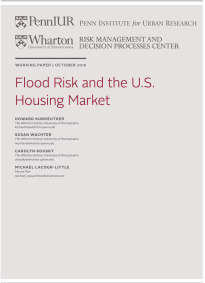Key Message
Flooding is predicted to become an even greater threat to the U.S. housing market due to climate change and ongoing development in high-risk areas. Current flood risk management, primarily through FEMA flood maps and the NFIP, is insufficient in addressing the full extent of the risk. Improving the accuracy of flood hazard maps, developing property-specific risk scores, and encouraging comprehensive flood insurance coverage are critical steps in mitigating future flood damage. These measures, along with better risk communication and economic incentives, are essential for enhancing community resilience and reducing financial risks associated with floods.


